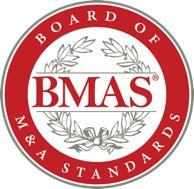M&A Integration: Don't Get Bucked Off
By Ellen Owens, Director of Business Transformation at Avnet and a member of the Board of M&A Standards
I grew up on a farm: raising pigs and cows and showing horses in 4-H. Reflecting back on my early years, I quickly learned the need to develop a trusting relationship with my horse, otherwise I would get bucked off or rolled on. Years later, I have learned a similar lesson when it comes to M&A Integration. If you don’t build trust with the employees of the acquired company, you are likely to have the deal “roll” on you.
Often overlooked, cultural integration should be a key focus for integration planning. Without a well-thought-out approach to cultural integration, the potential value of the acquisition can begin to erode, causing employees to become resistant to the new combined strategy. This resistance can make it very difficult to hit timelines and maintain customer satisfaction, and it can put regulatory compliance at risk.
Remember to consider the cultural differences between your organization and the one you are acquiring while building your integration plan. Here are 5 things your new employees might be feeling:
1. “This feels weird and uncomfortable.”
When you place a saddle on a young horse for the first time, you are likely to experience some resistance because it doesn’t feel natural to them. The horse may bite at the saddle or roll because they will do anything they can do to resist the foreign object.
Imagine if a small, relaxed company has just been acquired by a larger corporation with a strict, professional dress code. Employees who once came to work in business casual dress and jeans now must conform and wear suits and ties. Something as small as dress code can have an impact on employee productivity and morale. Consider, as part of the integration planning, an opportunity to adopt a more relaxed dress policy for the entire combined organization.
2. “I don’t understand what you are asking me to do.”
There are many cues that tell a horse to go forward, stop or go backwards. If your cues are different from how the horse was trained, you are likely to end up on the ground.
Every company has their own jargon, terms and acronyms. Although some are standard, some are unique to that company. If you expect employees to feel a part of the new company, it is important to recognize that if you give them instructions or directions full of lingo and acronyms, they may not know what you are talking about. In preparing for Day 1 (day of announcement) post a list of commonly used acronyms or terminology on the employee intranet site. When you are meeting with employees of the acquired company, be careful not to use too much internal jargon and be on the lookout for signals that the person may not understand what you are talking about.
3. “We have always done it this way.”
Horses are creatures of habit. They are typically fed the same time of the day, follow a similar path in the pasture, and are often exercised at the same time of the day. Professionals understand that a show or race horse will likely not perform their best if those routines are drastically disrupted.
Employees are creatures of habit as well. Every morning while I wait for my computer to turn on, I get a cup of coffee and make a list of the things I need to accomplish. Although there are certainly mornings where that routine is disrupted by a phone call or an early meeting, it doesn’t ruin my day. A more impactful change such as changing from a Mac to a PC, video conferencing versus phone conferences, or switching email platforms can be disorienting. Communicating the change well in advance can reduce anxiety and allow employees to prepare for the change, thereby reducing the risk of lost productivity and breakdown of employee trust.
4. "I am not used to this level of management pressure.”
Horses are not naturally accustomed to having a human on their back. They also can sense when the human is uncomfortable, nervous or unsure of what they are doing.
Merging employees typically results in changes to reporting structures. An employee from the acquired company may now have a reporting structure that they did not have in their previous organization. Regardless of the manager’s skills and abilities, the employee may put pressure on themselves until they get to know their new manager and develop a sense of trust. Preparing managers in both organizations and equipping them with the skills and abilities to recognize and address these situations can help employees through the transition period.
5. "I am beginning to lose trust and confidence.”
A horse can lose confidence if it has experienced a fall, an injury, or a negative change in routine. This can result in behavior that puts the horse and rider at risk. Rebuild trust and confidence is critical to being able to get back in the saddle.
Employees can be traumatized when they hear that their company is being sold or divested to another company. They may feel betrayed and lied to. Confidence and trust not only for the acquiring company, but for the selling company can be damaged and result in some negative behaviors. It is important during due diligence to identify any risk of employees who may act out or even sabotage the deal. Creating a shared vision for success while being transparent and honest in communications may begin to build trust and regain the confidence of key employees.
Cultural differences are inevitable when bringing two organizations together. These differences to some are deeply personal and requires an approach that changes human behavior. Acknowledging the disparities, taking an objective approach yet disciplined approach to resolving them can be the differentiating factor between hitting synergy targets or leaving money on the table. The bottom line is to identify cultural misalignment early on, develop a holistic plan to mitigate risk and hold on tight, partner, because that horse will be ready to run!
 About Ellen Owens:
About Ellen Owens:
Ellen Owens is scheduled to be a guest presenter at The Art of M&A Program Management in Scottsdale, May 2019. She is the Director of Business Transformation at Avnet, a global electronics company with abilities that can support customer from concept through creation and design to distribution. In her current role, Ellen leads highly collaborative global business transformation initiatives that result in growth opportunities, cost savings, and process efficiencies. Most notably, Ellen served as the global lead for the divestiture of a significant portion of the Avnet business in 2016-17.

